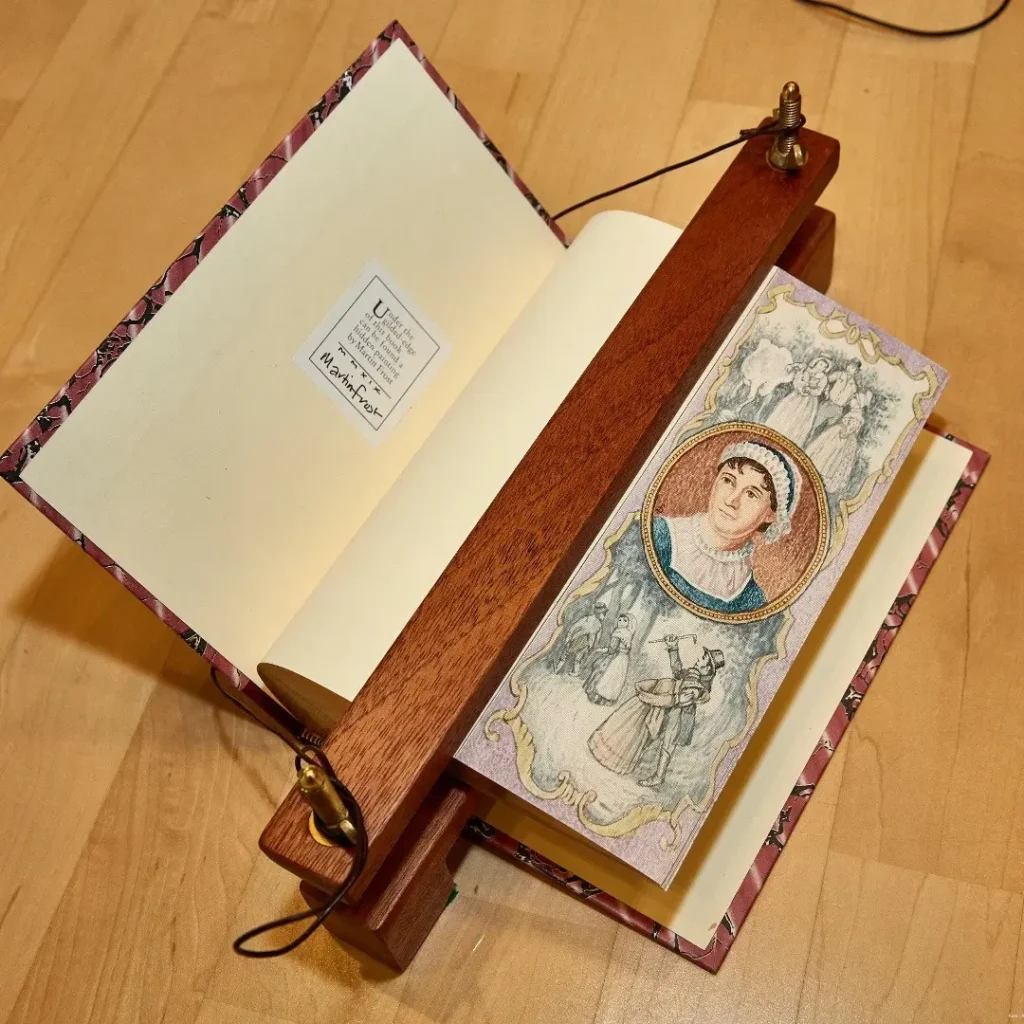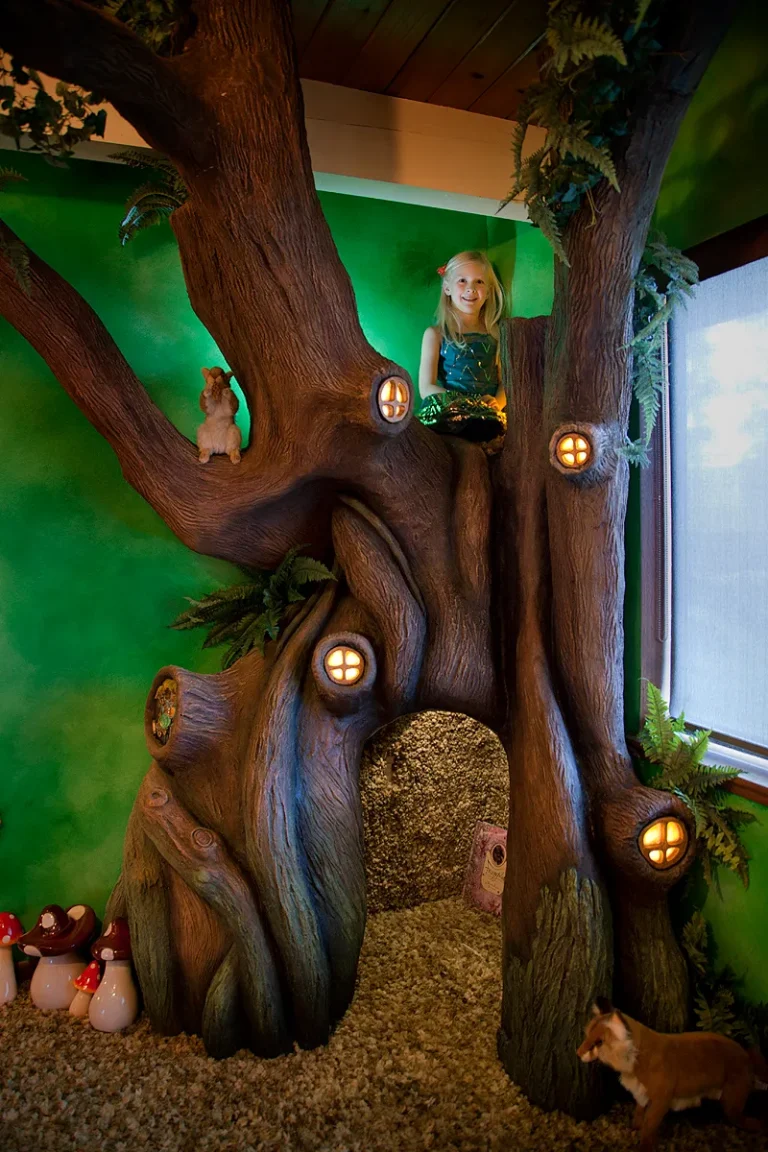A look into fore-edging: the history of the unbelievable art on the page edges and how it all started.
Plenty of people collect pretty, collector’s edition novels and books. Whether they’re hardback editions, limited covers—you name it, someone will want it. So it’s no real surprise that, for a very long time, artists have been creating mini-masterpieces for fore-edge illustrations.
From landscapes from the book to simple symbols and lettering, fore-edge illustrations are a long-standing way to take a book from drab to fab without even touching the cover or the contents. But when did it start? Is it still a practice around today?
Here’s everything you need to know:
What Are Fore-edge Paintings?
The fore-edge of a book is the side of the page block, the part usually hidden away when a book is slipped into its place on a bookshelf. Fore-edge painting or fore-edge illustrating is exactly what you would expect—it refers to artwork painted or drawn on the closed pages of a book.
This practice has been around for a long time, and there are a few different types of fore-edge painting. Sometimes, artists will simply gild pages, covering the edges in gold or silver leaf. Other times, they may paint whole scenes or landscapes in a process known as ‘all-edge painting’.
Some of the more ambitious fore-edge artists took this to a whole new level by creating ‘disappearing’ fore-edge paintings that were painted so specifically that, unless the book was looked at in a specific way, the artwork seemed nonexistent. This was done by painting only on the insides of the pages to create the image at the right angles.
This can be done from both sides of the book, too, to create one image when the book is fanned one way and an alternative image when the book is fanned the other direction. This was dubbed the ‘two-way double’ and gave artists the chance to make two amazing illustrations in one book. Artists could also do this by letting the book fall open and painting one half with one illustration and the other with another, equally as beautiful illustration.
But those aren’t the only ways that fore-edge painting was experimented with! Artists also experimented with illustrations that had to be pinched and held in certain ways to see the artwork. Really, the only limitation to how fore-edge artworks were limited was by the artist’s imagination!
What Kind Of Art Is Painted On The Books?
Fore-edge painting has been around for a long time, and so the art painted on the sides of the books has, naturally, developed and changed. But when we speak of traditional fore-edge painting, the illustrations cover a wide range of things!

Early examples of fore-edge painting featured symbolism and heraldry, lettering, and other simple designs. But these developed and, by the 17th century, had become much more ornate. You could find landscape scenes, faces, buildings, historical monuments—anything that the artist desired, pretty much! The art didn’t even always match the contents of the book.
When Did Fore-edge Paintings Start?
The earliest fore-edge paintings have been traced as far back as the 10th century. These were the simpler designs, and are thought to have been used more for identification than for decoration. The fore-edge paintings with exciting illustrations and innovations like the disappearing fore-edge illustrations did not arrive on the scene until much later.
In England, it is thought to be the 1600s. In the USA, there is a legend that a duchess and friend of Charles II would often borrow books, and would frequently forget to return them (we’ve all got a friend like that!). In response to this, Charles II commissioned a court painter, Peter Lely, and a bookbinder, Samuel Mearne to devise a secret method for him to identify his books!

There may be some truth to this legend. A former Superintendent of Bookbinding agreed that Samuel Mearne was the mastermind behind the art of fore-edge painting. However, research outside of the royal book collection suggests this wonderful art style might have reached the USA as long as 10 years before the legend took place. Historians instead claim that a painted copy of The Holy Bible is the first known instance, designed and dated to 1653.
Either way, by 1750, the development of fore-edge painting was incredible. By this point, landscapes, religious scenes, and everything in between, painted in full color could be found on the side of books. This rise in popularity and designs is often accredited to The Edwards of Halifax, a family of bookbinders and booksellers who made fore-edge painting popular in London, leading other booksellers to create similar designs and products.
Do You Still See Fore-edge Paintings Today?
You can absolutely still see fore-edge painting today. There are still plenty of historical works, like those in the Ralph H. Wark Collection (the biggest fore-edge collection in the USA) and in various libraries and museums, but there are also modern equivalents!
Plenty of books these days come with what are called ‘painted edges’ or ‘sprayed edges’. The latter is done digitally, so is not quite the same as fore-edge painting, but the former is very much a similar technique! These books are usually collectors’ editions or first prints and can be sold for quite a lot online to those who have their at-home collection.
There are also lots of people out there who offer fore-edge painting services, taking books that people already own and adding illustrations to the fore-edge for them.
Some of The Most Impressive Fore-edge Paintings
1. The Pictorial Edition of The Works of Shakespeare, Vol 7.
This old Shakespeare text has two wonderfully illustrated pictures of the playwright himself sitting neatly on the fore-edge.
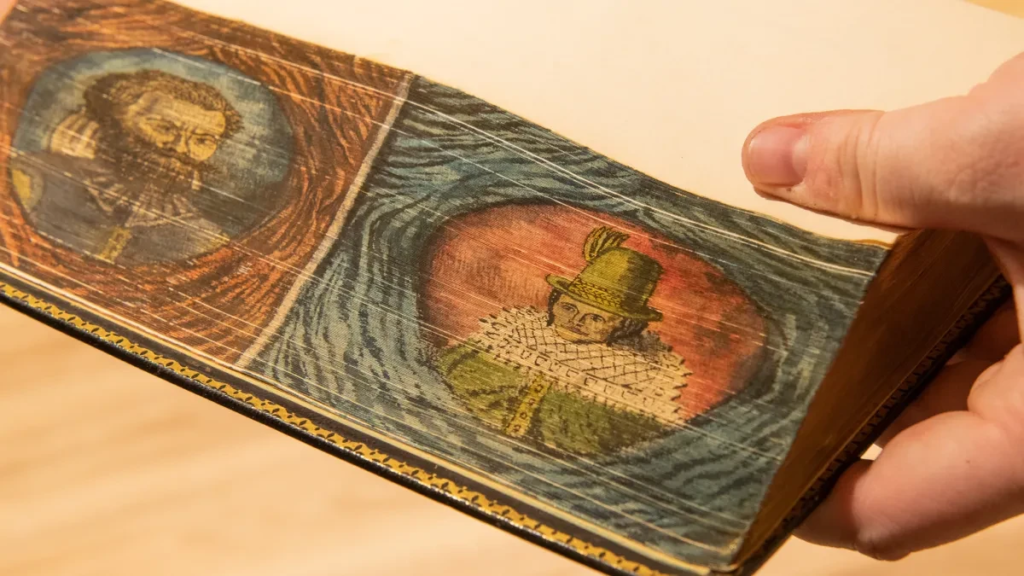
2. About Yorkshire
This book about Yorkshire, a county in the UK, features a stunning image of York Cathedral!

3. The Natural History of Monkeys
This beautiful illustration of two monkeys in the wild is the perfect fore-edge artwork for a book on The Natural History of Monkeys!
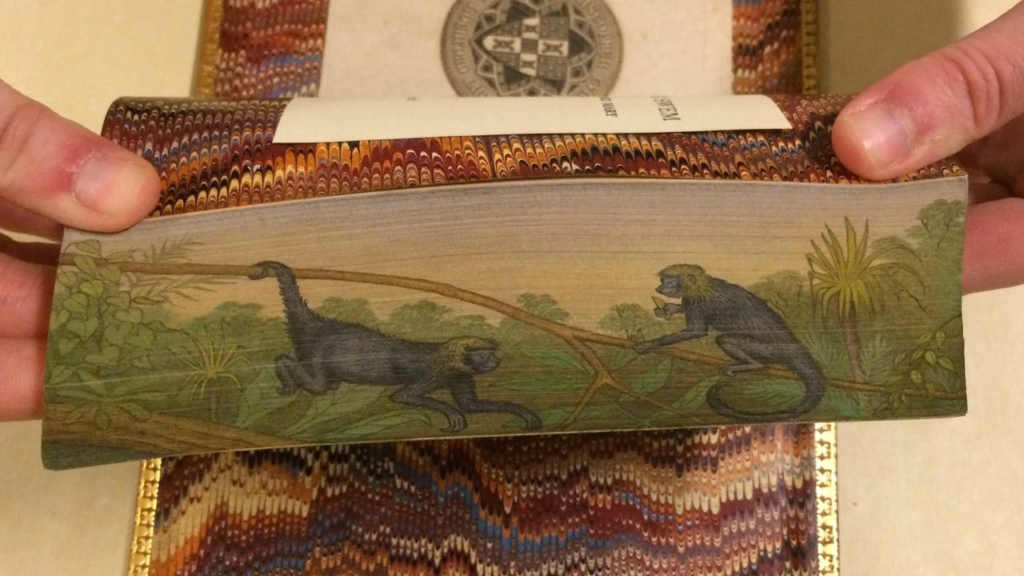
4. The Dictionnaire Grec-Francais
This slightly more risque fore-edge is so intricately detailed it’s unreal! The tiny brush strokes that it would’ve required…

5. The Book of the Thames
This stunning three-sided rendition of the Thames in London is worthy of its own frame and place on a wall!

6. The Lord of The Rings
A more modern fore-edge painting, this gorgeous cottagecore Hobbit house is just wonderful.
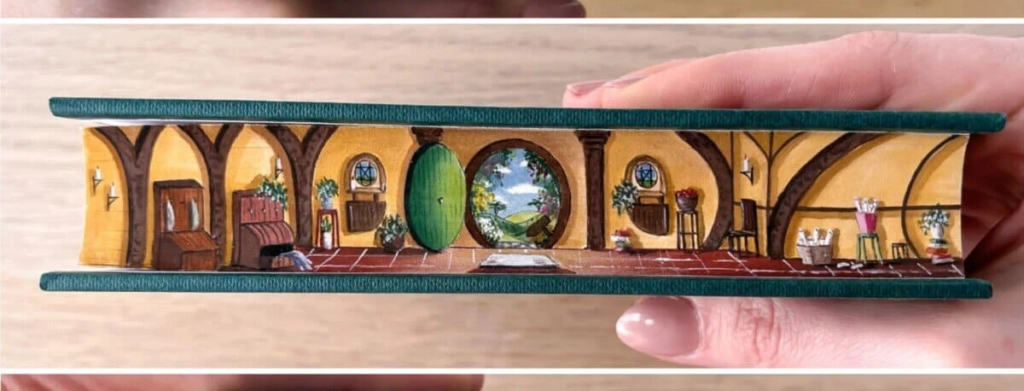
Join our community of 1.5M readers
Like this story? You'll love our free weekly magazine.





